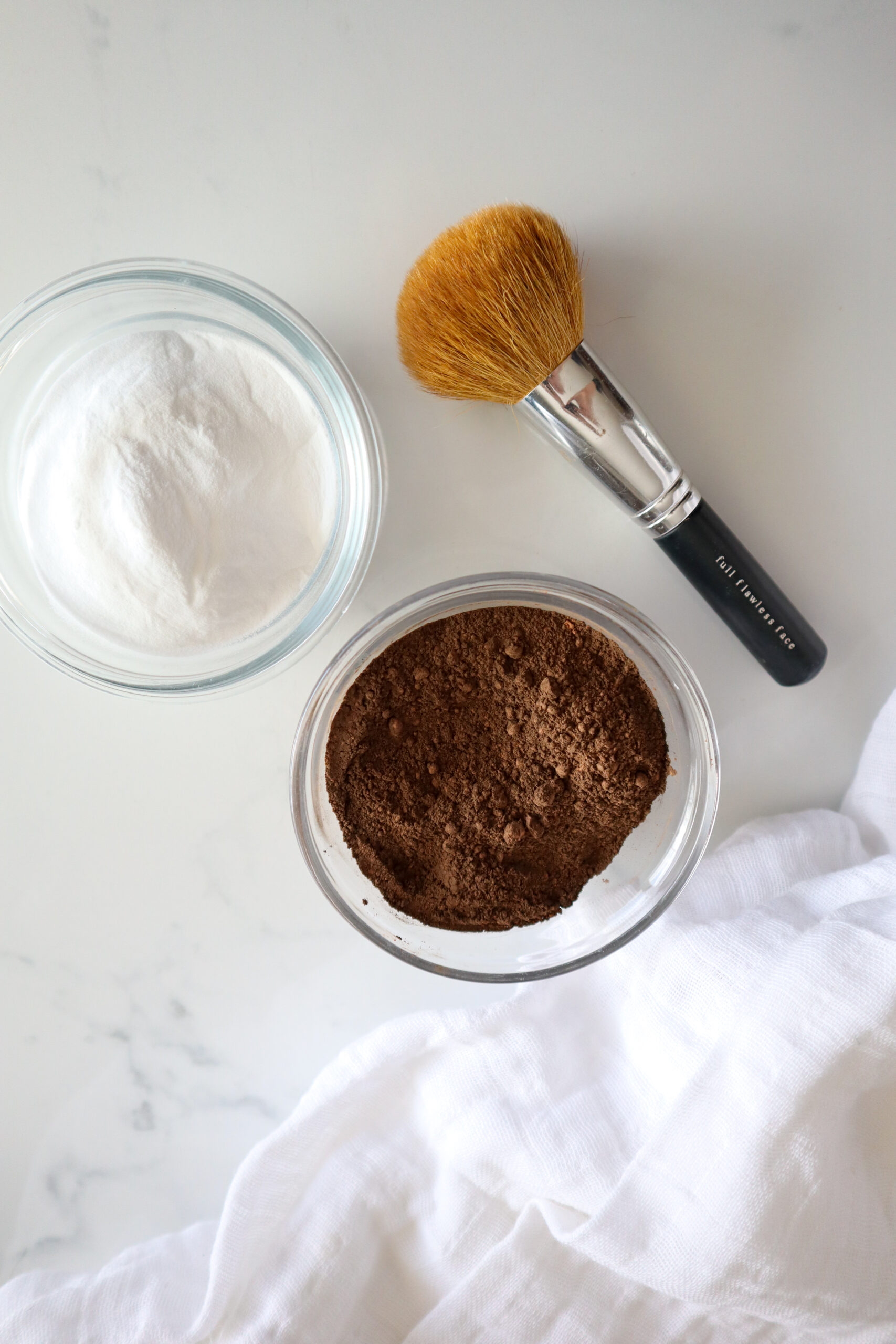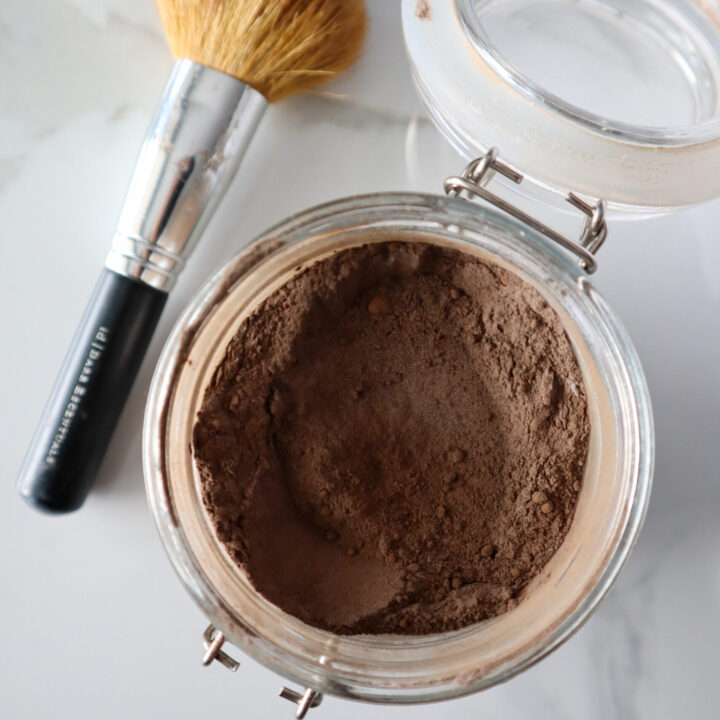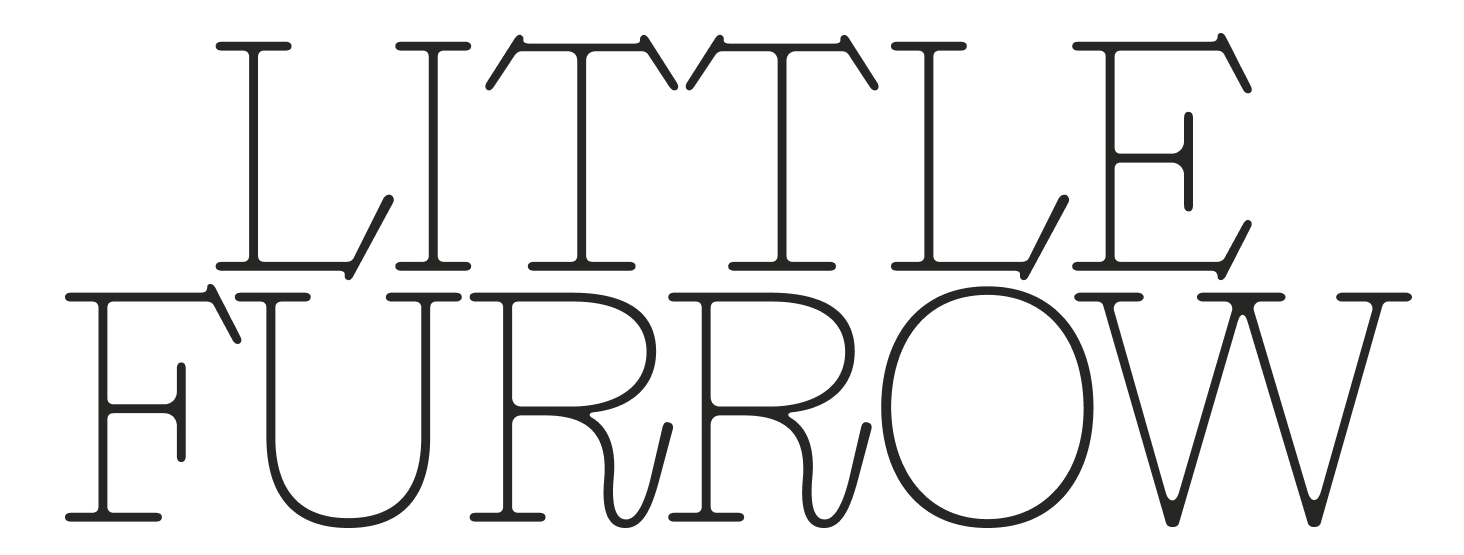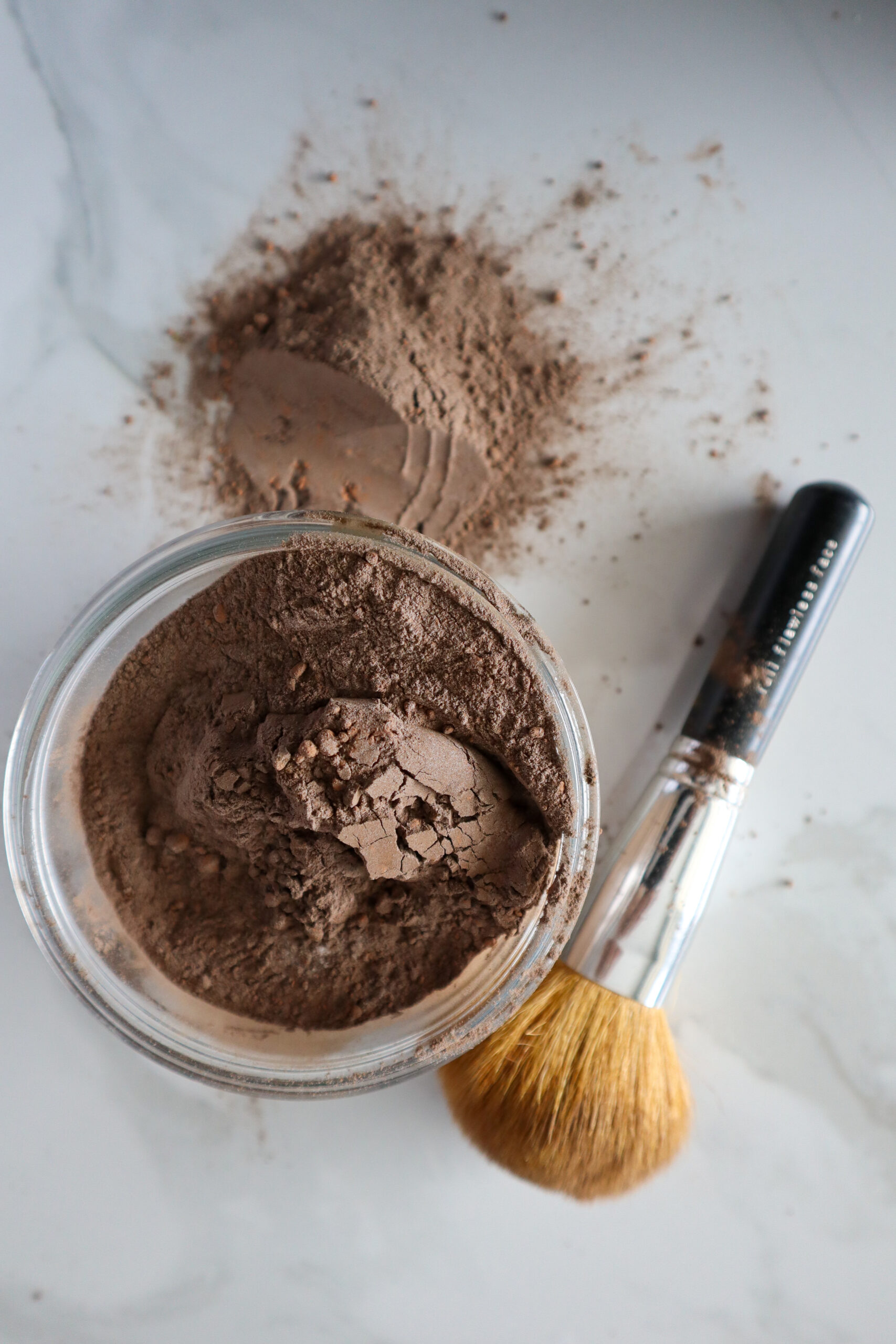DIY Dry Shampoo
If you’re like me, washing your hair everytime it’s dirty, just isn’t realistic. I first discovered dry shampoo in college. I was busy with studying, working, dating the love of my life, trying to network and plan for my future, and I definitely didn’t have the budget for bougie dry shampoo. So, like most of us, I sprang for the quick, drugstore dry shampoo. The magic solution–for about $3, made my hair look clean, and even volumininous! Initially, I was sold. Dry shampoo is my new best friend.
Fast forward a month or two, my forehead is relentlessly broken out in whiteheads. I’ve never had this before–I don’t even know what these tiny bumps are. My first thought, is that these tiny bumps must be related to environmental factors–I’m a bit stressed juggling all of my responsibilities. I’m in a new climate–my skin just isn’t used to this winter and forced heat climate. (I moved from the South to Chicago.) Yet, months go on, and I cannot deny the fact that my skin is protesting something.
So, after reading a bit about side effects of dry shampoo, I decide to try cutting it out of my routine. And… presto! My skin clears up. The answer is obvious. The dry shampoo, that made my hair look “magically” clean and fresh, had actually caused me to break out uncontrollably. Cool. Now what?
By the way, there are a number of easy DIY hair products you can try at home. We love this homemade conditioner recipe as well as this DIY sea salt hair spray that doesn’t leave your hair looking crunchy.

The Truth About Dry Shampoo
I did a bit of research. Why had the dry shampoo caused my skin to be so upset? Well, for starters, there are a lot of ingredients in most over-the-counter dry shampoos. Ingredients that my skin, and maybe yours as well, are not in agreement with. Most store-bought dry shampoos contain artificial ingredients.
- Benzene – Benzene is a carciogenic and is found in many common beauty products. The ingredient is unnecessary and toxic.
- Talc – Talc is often associated with asbestos, which is a carciogen that should be avoided for the sake of health and saefty.
- Silicones – Silicones coat and trap build up on the scalp. Hence, acne-prone folks should avoid products with silicones.
So, what other options are out there? Yes, the natural, non-pore-clogging dry shampoo brands pop up by the minute. However, what if I’m still only willing to spend about $3 every few months for my clean hair without the hassle? That’s where this DIY dry shampoo recipe comes in handy. Learn to use simple, safe household ingredients to absorb greasy hair and keep your scalp free from toxins. Here’s how we make this DIY dry shampoo.

Non-Toxic Ingredients
I hate to admit it, but the ingredients in cheap, store-bought dry shampoo make my skin break out. So, I had to figure out what ingredients 1. I could afford and 2. wouldn’t make my skin break out. Here’s what I found:
- Baking Soda – Baking Soda absorbs moisture and grease in the hair, without the added ingredients. Although excessive use is not great for pH balance in the scalp, for absorbing moisture, this ingredient gets the job done without the side effects.
- Cocao Powder – This ingredient minimizes inflammation and also softens the stark appearance of baking soda by giving it a natural hair tint.
- Essential Oils – Many essential oils, such as rosemary and grapefruit oil, actually benefit the scalp and skin.

Dry Shampoo for Every Hair Color
The most important thing to keep in mind is that every hair color is unique, so everyone should find a DIY dry shampoo color that matches their exact tone and color. The basic ingredients you’ll want to work with to find your perfect color are: cocoa powder for brown tones, turmeric powder for red tones, ginger powder for blonde tones, and activated charcoal for black hair tones.
Dry Shampoo Recipe for Brown Hair
If you have brown hair, try the following combination for your DIY dry shampoo:
- 1/4 cup cocoa powder
- 1/4 cup activated charcoal
- 1/4 cup baking soda
- 10 drops essential oils
Dry Shampoo Recipe for Black Hair
For dark or even black hair, you’ll want to stick to activated charcoal. Try this combination:
- 1/4 cup activated charcoal
- 1/8 cup baking soda
- 5-10 drops essential oils
Dry Shampoo Recipe for Blonde Hair
For blonde hair, stick to lighter ingredients, like ginger powder.
- 1/4 cup ginger powder
- 1/8 cup baking soda
- 5-10 drops essential oils
- *cocoa powder for dirty blonde hair as needed
Dry Shampoo recipe for Red Hair
For natural gingers, you’ll add a bit of spice to your DIY dry shampoo. Add turmeric for redish hues.
- 1/4 cup turmeric powder
- 1/4 cup cocoa powder
- 1/4 cup baking soda
- 10 drops essential oils

Instructions
Step 1 – Create Your Hair Color Mixture
Use cocoa, ginger, activated charcoal, and turmeric to form a natural powder that resembles the color of the roots of your hair. Set aside.
Step 2 – Mix Ingredients Together Carefully
Mix the hair color powder with the baking soda until combined. Use a whisk to remove any clumps.
Step 3 – Optional – Add Essential Oils
For additional fragrance and cleanliness, add essential oils like rosemary and grapefruit.

Tips for Making Dry Shampoo
What can I use instead of baking soda?
Other DIY dry shampoo recipes often call for corn starch or baby powder. Each of these cheap ingredients absorbs moisture and gives you control over what’s going on your scalp.
Can baking soda fix greasy hair?
Baking soda absorbs grease in hair. However, DIY dry shampoo should not be used in replacement of standard shampoo. This recipe is intended for occasional use to prevent grease in hair roots.

DIY Dry Shampoo
Need a quick hair fix? This simple dry shampoo recipe will absorb grease and give your roots some volume.
Instructions
- Blend ingredients to form a color that matches the color of your hair's roots.* For reddish-brown hair, combine cacao powder and turmeric.
- Mix hair color mixture with baking soda until thoroughly combined.
- Add essential oils.
- Apply dry shampoo to roots with a powder makeup brush.
Notes
For blonde hair, use ginger powder. For black hair, use activated charcoal powder. For red hair, use turmeric powder.







